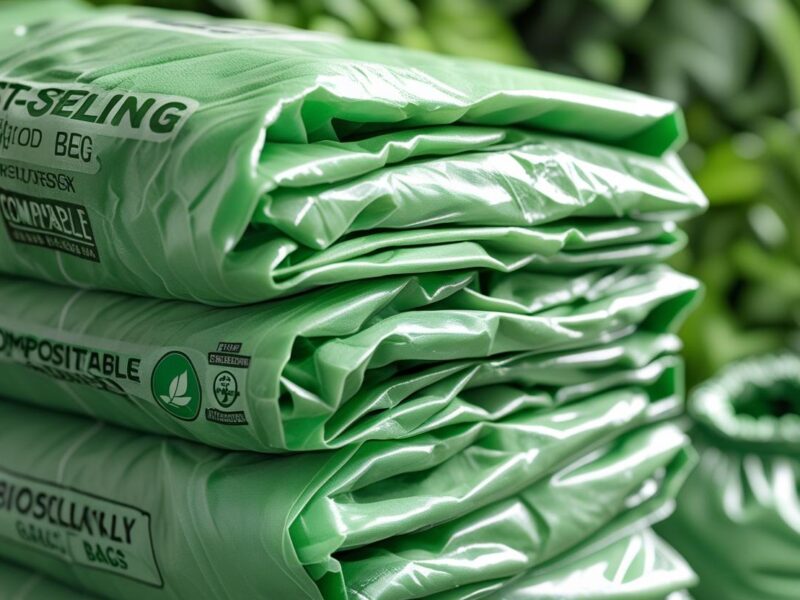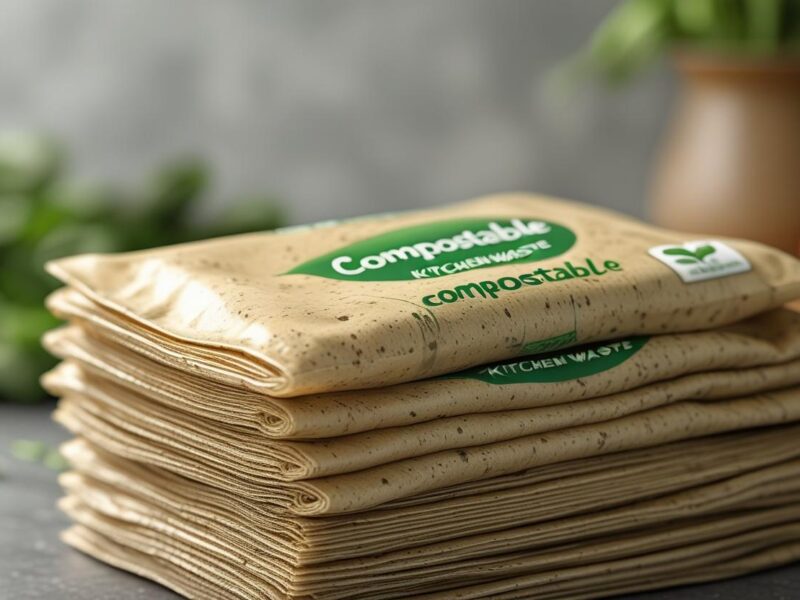In today’s world, sustainable living is more than just a trend – it’s a necessity. Our kitchens are the biggest contributors to household waste, thanks to plastic packaging, food scraps and single-use items. If you’ve ever been overwhelmed by the waste your cooking habits create, you’ll think you’re not alone.
The good news? You can make a big difference by starting zero-waste cooking from your home. This guide will tell you about easy, affordable and effective ways to reduce kitchen waste, switch to eco-friendly appliances and develop cooking habits that are kind to the planet and your wallet.
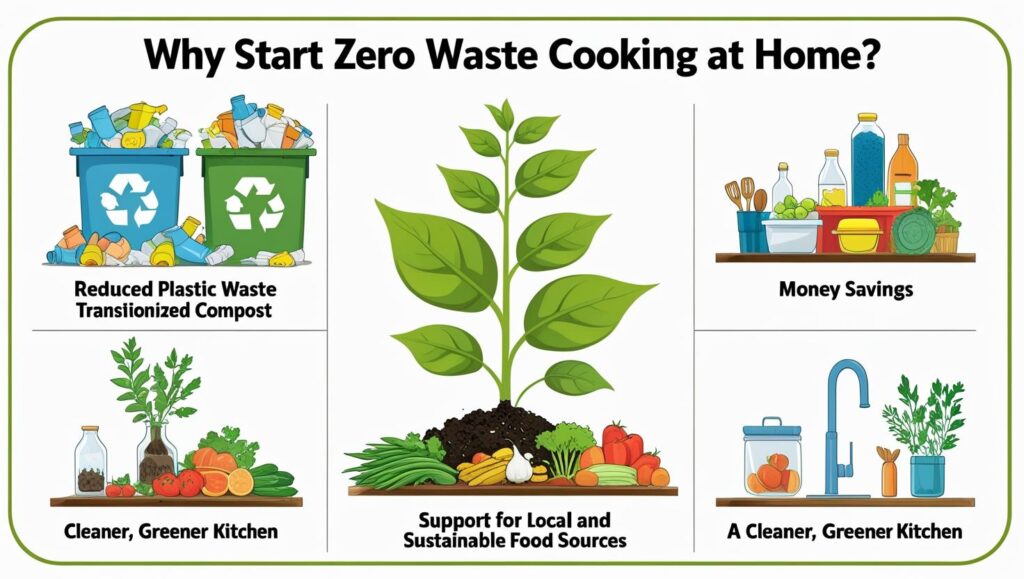
Why Start Zero Waste Cooking at Home?
Zero waste cooking isn’t about perfection—it’s about progress. It helps you:
- Reduce plastic and packaging waste
- Save money by using ingredients more efficiently
- Support local and sustainable food sources
- Create a cleaner, greener kitchen environment
Whether you’re living alone or with family, starting small can lead to lasting change.
Best Biodegradable Kitchen Utensils for Daily Use
Replacing plastic containers with biodegradable alternatives is a simple but powerful step. Here are some great eco-friendly alternatives that will make your life more beautiful:
| Utensil Type | Eco-Friendly Option | Lifespan |
|---|---|---|
| Spoons & Spatulas | Bamboo or coconut wood | 6–12 months |
| Cutting boards | Bamboo or recycled wood | 1–2 years |
| Plates & Bowls | Areca palm leaf, bamboo | Single-use / reusable |
| Scrubbers | Coconut coir or loofah | 2–3 months |
These utensils are not only naturally biodegradable but also safe for health and often make us look more stylish!
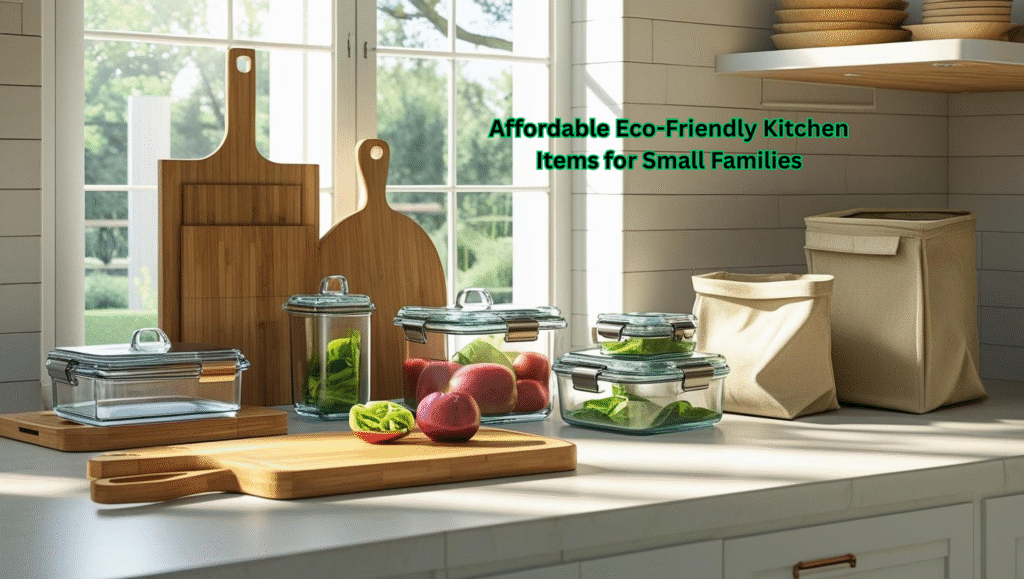
Affordable Eco-Friendly Kitchen Items for Small Families
You don’t need a huge budget to switch to sustainability. Here are some affordable swaps that are perfect for small families:
- Glass jars instead of plastic containers
- Cloth napkins instead of paper towels
- Stainless steel straws
- Beeswax wraps instead of cling film
- Reusable shopping bags for groceries
Start with what you can, and build over time. Even small changes matter.
Plastic-Free Kitchen Tips for Beginners
Going plastic-free can feel overwhelming at first. Here are some beginner-friendly tips:
- Buy in bulk to avoid individual packaging
- Use cloth bags for fruits and vegetables
- Switch to bar soap for dishwashing
- Avoid single-use cutlery and cups
- Recycle and compost properly
💡 Pro Tip: Keep a “no plastic” checklist on your fridge to track your progress.
Eco-Friendly Ways to Reduce Kitchen Waste
Reducing waste isn’t just about plastic. Food waste is a major issue too. Try these practices:
- Plan your meals ahead to reduce leftover food
- Store food properly to extend shelf life
- Repurpose scraps into soups, stocks, or compost
- Freeze leftovers before they go bad
- Donate excess food to local charities
Sustainable Cooking Habits to Save Money and the Environment
Want to save money while being eco-conscious? Adopt these habits:
- Cook in batches to reduce energy usage
- Use a pressure cooker to save gas
- Buy seasonal produce to support local farmers
- Avoid overcooking to preserve nutrients and energy
- Invest in quality cookware that lasts longer
These changes help you save on bills and reduce your carbon footprint.
Where to Buy Eco-Friendly Kitchen Products in Bangladesh
Here are some reliable online/offline sources in Bangladesh:
- Eco Bangla (Online store for bamboo and sustainable goods)
- Daraz BD (Search for “eco-friendly kitchen”)
- Aarong Earth (Physical stores and website)
- Zero Waste Bangladesh (Instagram-based seller)
Always check for authenticity and certifications like BPA-free, biodegradable, or FSC-approved.
Benefits of Bamboo Kitchen Tools Over Plastic Ones
| Feature | Bamboo Tools | Plastic Tools |
|---|---|---|
| Eco-Friendliness | 100% biodegradable | Non-biodegradable |
| Durability | High (with care) | Moderate |
| Health Safety | No toxins or chemicals | May leach microplastics |
| Look & Feel | Natural & stylish | Often synthetic-looking |
Natural Cleaning Solutions for an Eco-Friendly Kitchen
Instead of harsh chemical cleaners, try these DIY solutions:
- Lemon + Baking Soda: Great for cutting boards and sink
- Vinegar + Water spray: For countertops and glass
- Used tea leaves: Natural odor neutralizer
- Salt + Vinegar: Effective for greasy pans
These are cheaper, safer for kids and pets, and just as effective!
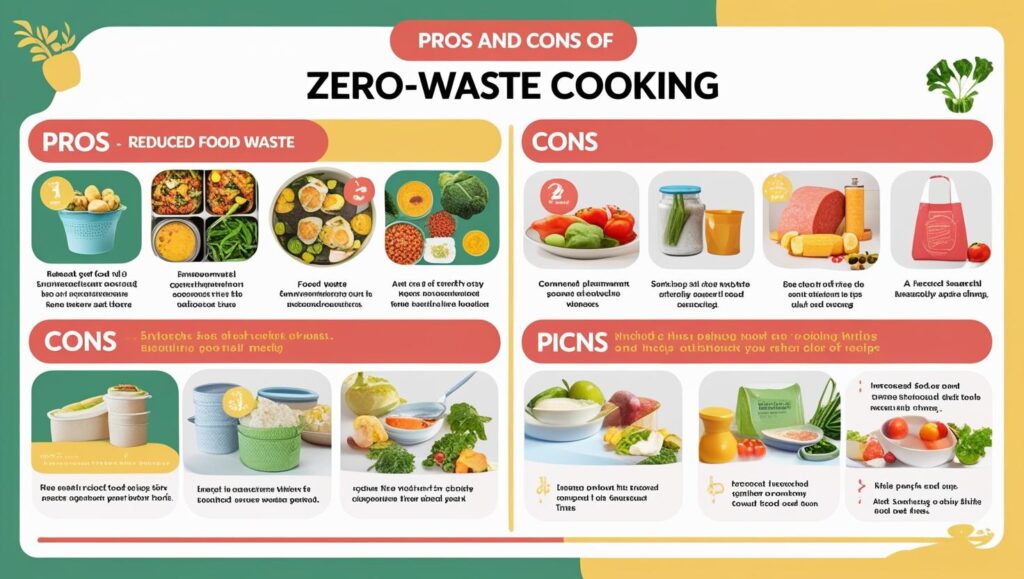
Pros & Cons of Zero Waste Cooking
| Pros | Cons |
|---|---|
| Reduces household waste | May require initial investment |
| Healthier cooking habits | Takes time to build new habits |
| Supports local, sustainable goods | Limited availability of some items |
| Saves money in the long run | Not 100% convenient for everyone |
FAQ Section
Q1: Is zero waste cooking expensive?
A: Not necessarily. While some eco-friendly items may cost more upfront, they often last longer and help reduce monthly expenses.
Q2: How can I compost kitchen waste without a garden?
A: You can use small indoor compost bins or bokashi buckets that are perfect for apartments.
Q3: What is the first step toward a zero waste kitchen?
A: Start by identifying your biggest waste sources—usually plastic and food scraps—and replace them with reusable or biodegradable alternatives.
Conclusion
Zero-waste cooking is a journey – not a destination. By making small, consistent changes, you can significantly reduce the environmental impact of your kitchen. From bamboo utensils to composting, every step counts.

